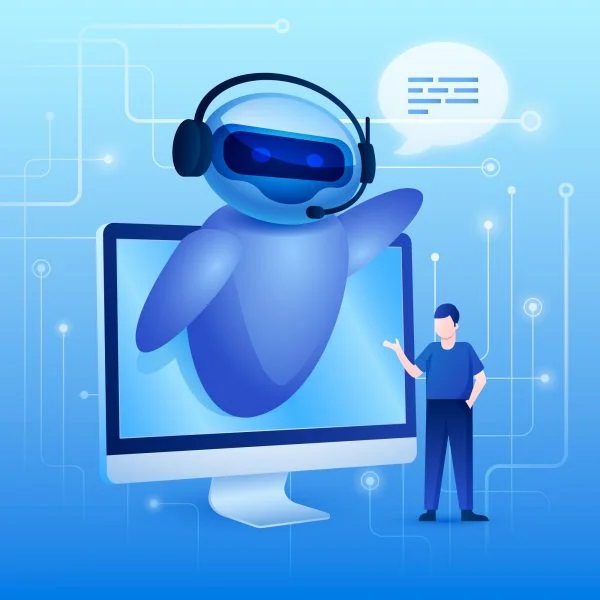Introduction
How to Create a Chatbot with ChatGPT? In today’s digital world, chatbots have evolved from simple, scripted tools into intelligent virtual assistants that can understand context, adapt their tone, and engage in natural conversations. Businesses, educators, and developers are now looking for smarter solutions that go beyond “canned” responses — and that’s where ChatGPT-powered chatbots come in.
If you’ve been wondering how to create a chatbot with ChatGPT, you’re not alone. This topic has exploded in popularity because ChatGPT’s AI model is capable of answering complex questions, remembering past interactions, and generating human-like replies. Unlike older bots that rely on rigid decision trees, a ChatGPT chatbot can deliver dynamic, personalized responses that make your users feel heard — whether they’re asking about a product, booking an appointment, or learning a new skill.
The best part? You don’t need to be a programming expert to get started. In this step-by-step ChatGPT chatbot tutorial, we’ll walk you through the entire process — from setting up your OpenAI API key to integrating your bot into a website or app. We’ll explore no-code, low-code, and full-code options so you can choose the path that suits your needs and technical skill level. Along the way, you’ll also discover how to design engaging conversational flows, implement essential chatbot security best practices, and customize your bot to match your brand’s tone and personality.
By the end of this guide, you’ll have a fully functional AI-powered chatbot ready to serve customers, automate tasks, or simply make your project more interactive — and you’ll know exactly how to scale and improve it over time.
Visit the latest Blog Post of GPT-5.

Understanding ChatGPT’s Role in Chatbot Development
How to create a chatbot with ChatGPT?
Before diving into the technical steps, it’s important to understand why ChatGPT chatbots stand out from traditional ones.
Older bots rely on strict if-else rules or predefined scripts, which makes them predictable and inflexible. In contrast, ChatGPT uses a large language model (LLM) that can handle dynamic conversation flow, recall earlier messages in a chat, and respond in a natural, human-like tone.
This means you can design ChatGPT chatbot flows that feel engaging, adaptive, and personalized — all without hard-coding every possible response.
Prerequisites Before You Start
How to Create a Chatbot with ChatGPT?
To build a ChatGPT chatbot, you’ll need:
-
An OpenAI account (to access the ChatGPT API).
-
API credentials (your private API key).
-
A development environment (VS Code, PyCharm, or an online IDE).
-
Basic knowledge of Python or JavaScript (or you can use a no-code tool).
Choosing Your Chatbot Platform
How to Create a Chatbot with ChatGPT? One of the first decisions is whether to build your chatbot using:
-
No-code platforms like Tidio, Landbot, or ManyChat (fast, no programming required).
-
Low-code tools like Botpress, which allow some coding flexibility.
-
Full-code custom builds with frameworks like Flask, FastAPI, or Next.js for maximum control.
The choice depends on your needs — for instance, a customer service ChatGPT chatbot may work well on a no-code tool, while a multi-feature AI assistant might require full coding.
Setting Up ChatGPT API Access
How to Create a Chatbot with ChatGPT?
To connect your chatbot to ChatGPT:
-
Sign up at OpenAI.
-
Go to the API section and generate your API key.
-
Store your key securely (never expose it in public repositories).
-
Review pricing and token usage to plan your budget.
If you’re new to APIs, think of this key as your bot’s “passport” to talk to ChatGPT.
Building Your Chatbot – Step-by-Step
How to Create a Chatbot with ChatGPT?
Let’s go through the ChatGPT chatbot creation process:
Step 1: Set up your environment.
-
Python example: Install
openaipackage withpip install openai. -
Node.js example: Install
openainpm package.
Step 2: Write your first API call.
-
Send user input to ChatGPT and print the response.
Step 3: Handle conversation memory.
-
Store past messages so your bot can keep context.
Step 4: Add personality & tone.
-
Use a system prompt like: “You are a friendly assistant helping small business owners.”
Integrating Your Chatbot into Applications
How to Create a Chatbot with ChatGPT? Once your chatbot works locally, you can integrate it:
-
On your website using JavaScript or iframe embeds.
-
Inside messaging pltforms like WhatsApp, Slack, or Telegram.
-
In CRMs for lead qualification and automation.
Designing Conversational Flows
Good UX is key to chatbot success. Consider:
-
Defining your bot’s tone of voice (professional, casual, humorous).
-
Mapping common user journeys and FAQs.
-
Supporting multiple languages for global audiences.
This is where you make your ChatGPT chatbot more than just functional — you make it memorable.
Security & Data Protection Best Practices
Security is crucial for AI bots:
-
Prompt injection prevention — don’t let users override bot instructions.
-
Data privacy — avoid collecting sensitive information unless encrypted.
-
Rate limiting — prevent abuse from spammy requests.
For business chatbots, compliance with GDPR or CCPA is a must.
Testing, Debugging & Optimizing Performance
Before launching:
-
Test with real users to find edge cases.
-
Measure response speed, accuracy, and helpfulness.
-
Fine-tune prompts for better results.
-
Monitor analytics to see which queries are most common.
Advanced Features & Customization
Want to go further?
-
Add voice-to-text and text-to-speech for voice chatbots.
-
Use file input so your bot can answer based on documents.
-
Connect to custom knowledge bases for niche expertise.
Real-World Use Cases
Popular ways to use a ChatGPT-powered chatbot include:
-
Customer support — instant answers, 24/7.
-
Education — tutoring in various subjects.
-
E-commerce — helping users find products.
Troubleshooting Common Issues
If you run into problems:
-
API errors — check your API key and request limits.
-
Low-quality answers — adjust the system prompt or temperature setting.
-
Slow responses — optimize API call handling.
FAQs
Q1. Can I create a chatbot with ChatGPT without coding?
Yes. Many no-code platforms like Tidio, Landbot, or Botpress allow you to build a ChatGPT chatbot by simply connecting your OpenAI API key and designing conversation flows visually.
Q2. How much does it cost to use ChatGPT for a chatbot?
Costs depend on API usage, measured in tokens. Small-scale chatbots can run for a few dollars per month, while high-traffic bots may require a larger budget.
Q3. How do I integrate my ChatGPT chatbot into a website?
You can embed your chatbot using JavaScript widgets, iframe embeds, or integrations provided by your chosen chatbot platform. For custom-built bots, you’ll need to connect via API calls from your site’s backend or frontend.
Q4. Is ChatGPT secure for handling user data?
ChatGPT itself doesn’t store personal data from API requests, but you are responsible for ensuring secure data handling, encryption, and compliance with privacy regulations like GDPR or CCPA.
Q5. Can ChatGPT chatbots work on multiple platforms?
Yes. You can integrate the same ChatGPT chatbot into websites, mobile apps, messaging platforms like WhatsApp, Slack, or Telegram, and even CRM systems.
conclusion
You now know exactly how to create a chatbot with ChatGPT — from choosing a platform to integrating advanced features.
The next step? Test it with your audience, gather feedback, and keep improving. With ChatGPT’s flexibility, your chatbot can grow alongside your needs.
How to Create a Chatbot with ChatGPT?
Are you ready to start?
Let’s set up a free consultation or demo, customized for your needs. Contact us now or visit our services page to get started!
